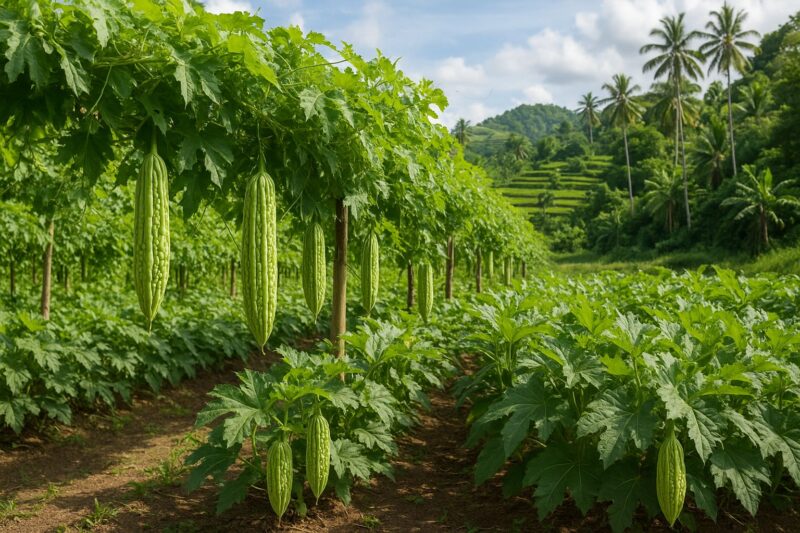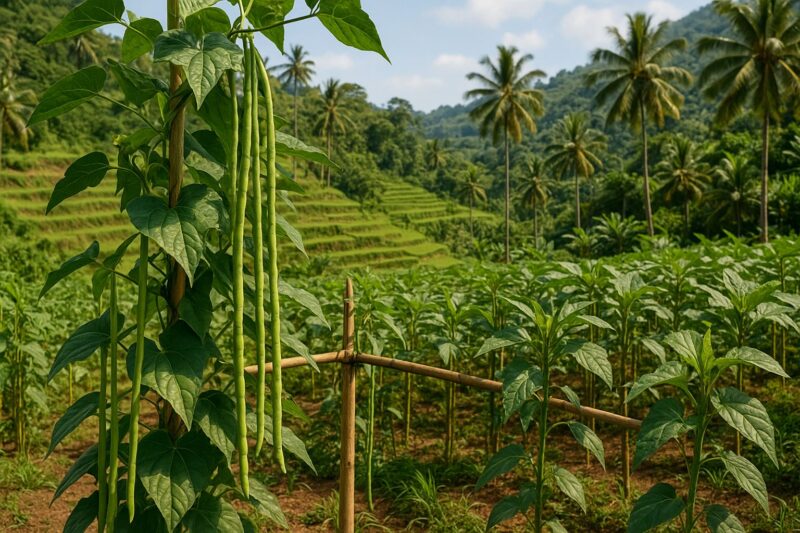Chili peppers—sili—give Filipino dishes their signature kick, from the fiery siling labuyo in Bicol’s kinunot to the milder siling haba tossed into panggang in Cavite. While peppers often get labeled “hot and hard to grow,” under our tropical skies they can actually thrive with the right care. Over several seasons in Bulacan, guided by tips from farmers in Laguna and upland growers in Bukidnon, I’ve refined a routine that yields steady harvests of spicy pods. Here’s what I’ve learned—warts and all—so you can fill your garden or market stall with bright red and green sili.
Variety selection sets the tone. Siling labuyo—the tiny, bird’s-eye pepper—packs heat but produces small yields; perfect if you want maximum pungency. For larger yields and medium heat, siling haba or cayenne types work well. Upland gardeners in Bukidnon sometimes grow bell peppers for mild flavor and high market value, though I stick to sili haba and labuyo in Bulacan for their reliability. Mixing both gives you versatility in the kitchen and on the market table.
Soil preparation cannot be rushed. Peppers crave loose, well-draining loam rich in organic matter. In clay-heavy plots—common in Bulacan and Pampanga—I mix two wheelbarrows of homemade compost and a handful of rice hull charcoal per ten square meters to lighten the soil. Coastal sandy soils—think Iloilo or Leyte—benefit from added coconut coir or aged chicken manure to retain moisture. Aim for pH close to neutral—around 6.5—so nutrients remain available.
Seedlings get started indoors about eight weeks before the last heavy rains—January in lowlands, November in uplands. Sow seeds in trays under shade cloth, keeping the medium moist but not soggy. Germination takes seven to ten days at temperatures between 25–30 °C. In Bulacan, I learned that sudden sun exposure cracks young leaves; since then, I harden off seedlings gradually over a week before transplanting.
Transplant at the onset of the rainy season—June to July—spacing plants about 40 cm apart in rows 60 cm apart. That distance lets leaves dry quickly in morning sun and allows you to weave between rows for scouting. Water in well but avoid puddles; peppers hate standing water around their roots.
Support is optional but helpful. Siling haba vines can flop under heavy fruit loads, so I tuck stakes beside each plant and tie main stems loosely with string. This keeps pods off the ground and reduces rot after unexpected rains.
Feeding blends routine and feel. At planting, I work compost into each hole and add a teaspoon of bone meal for early root development. Once flowering begins—around six weeks in—I side-dress with decomposed chicken manure or an organic balanced fertilizer, placing it just beyond the drip line. Too much nitrogen can spur leafy growth at the expense of peppers, so I balance with a light sprinkle of wood ash for potassium once pods form.
Sunlight and shade balance matter. Peppers need at least six hours of direct sun, but prolonged, intense midday heat above 33 °C can cause blossom drop. I protect young transplants with shade cloth in those first few weeks, especially on rooftop gardens in Manila, before letting them enjoy full sun.
Pests and diseases stay minimal with vigilance. Aphids cluster under new leaves; a gentle water spray or garlic-soap infusion keeps them at bay. Fruit flies target ripening pods; I harvest labuyo early—when pods first turn red—and cover siling haba clusters with small paper bags for the last week of maturity. That simple barrier often saves half my harvest.
Harvest begins 75–90 days after sowing, depending on variety. Pick pods when they glisten—green or red, whatever the type—and give gently; mature sili have a slight snap when cut. Frequent picking—every two to three days—encourages more flowering and prolongs the season through the late rainy months.
One season in Bulacan, after a week of near-constant rain, my vines stood soggy and limp. I propped them with extra stakes, pruned broken leaves, and added lime to the soil to reduce acidity from rain. Within a fortnight, buds reappeared and the harvest resumed—proof that small tweaks can save a season.
Whether you cultivate the fierce labuyo in backyard beds or milder haba in containers on a balcony, mastering soil health, seedling care, balanced feeding, sun-shade management, and simple pest defenses will bring you bountiful sili harvests across the Philippines. It may take patience—those seeds can be slow to sprout—but the punch of homegrown heat is well worth the effort.
I’m open for consulting and speaking opportunities on sustainable vegetable production and agribusiness nationwide. Let’s grow some spice together.
#Sili #ChilePeppers #PhilippineFarming #SustainableAgriculture #UrbanGardening #ConsultingAvailable #SpeakingOpportunities




